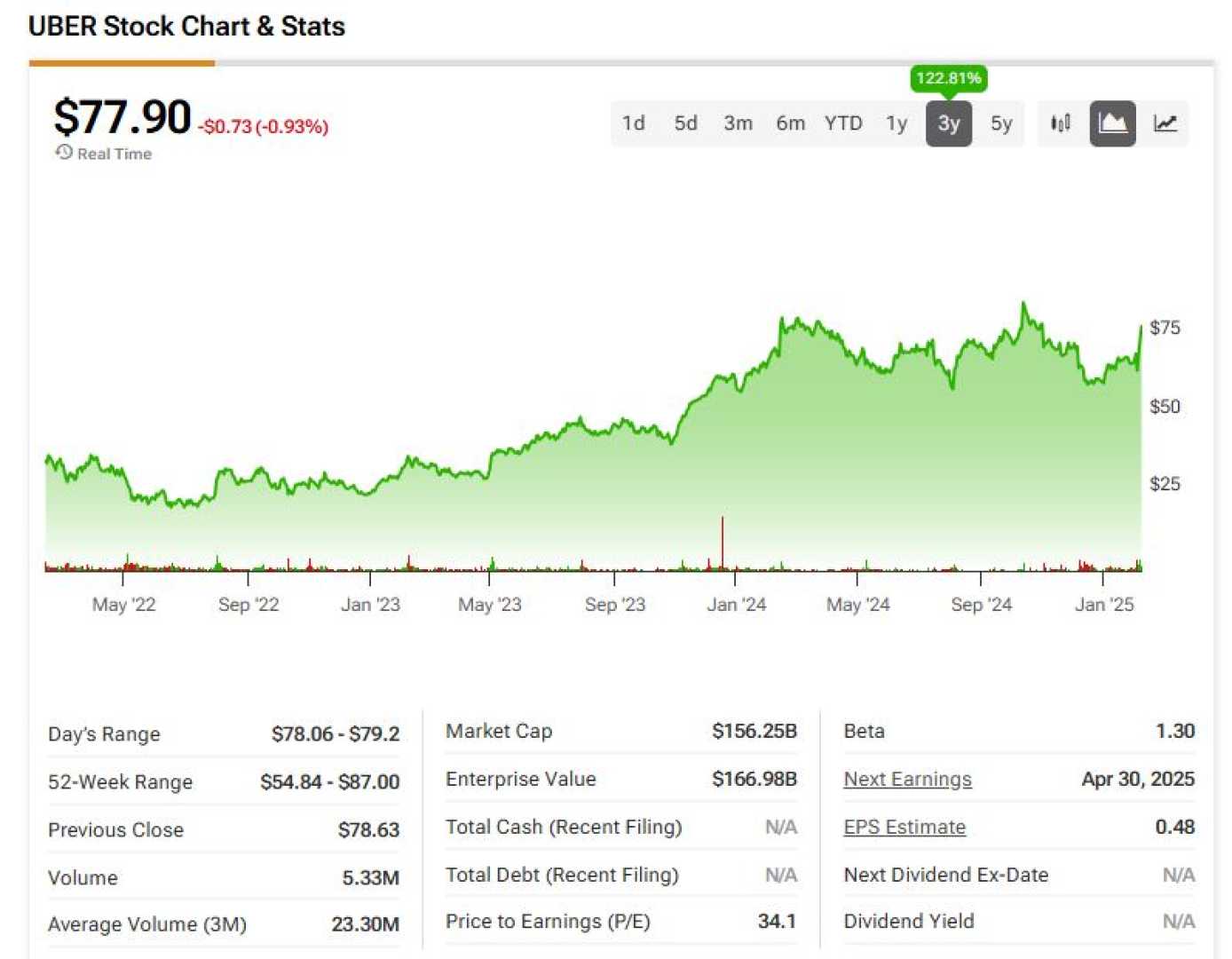Business
Uber’s Stock Volatility Highlights Potential for Future Gains

San Francisco, CA – Uber Technologies Inc. is experiencing significant fluctuations in its stock price, recently closing at $64.56 as of April 4, 2025, a decline of 7.57% from the previous day. Despite the recent drop, the company has seen a remarkable 193% increase in share price over the last five years, raising questions about the future trajectory of the stock.
As Uber continues to navigate a volatile market, it finds itself approximately 20% below its all-time high. Many investors are left wondering whether this represents an opportunity to invest or a risk to avoid. The company has grown exponentially since its inception 16 years ago, now boasting a market capitalization of $135 billion.
Uber’s growth story is characterized by its superior service compared to traditional taxis. The introduction of new technologies and services has allowed it to dominate the ride-sharing market. In the past five years alone, Uber’s revenue soared by 212%, fueled by a 150% spike in gross bookings.
Looking ahead, analysts remain optimistic, forecasting that Uber’s revenue could expand at a low-to-mid double-digit growth rate in the coming years. “The top line remains strong, and we expect to see continued revenue growth due to our expanding service offerings,” said a member of Uber’s leadership team.
Notably, the Uber One subscription service has demonstrated promise, growing its membership base by 60% year-on-year in the fourth quarter of 2024. Additionally, the launch of UberX Share aims to cater to more price-sensitive consumers, broadening its customer base further.
However, challenges remain on the horizon. One major risk facing Uber is the potential impact of autonomous vehicles (AVs) on its business model. Should AV technology become mainstream, it could drastically reduce ride costs by eliminating the need for drivers. Yet, Uber is positioning itself to leverage this change, forming partnerships with companies like Alphabet’s Waymo for driverless rides in select cities.
“Partnering with companies like Waymo and Nvidia allows us to stay ahead of the curve in AV development,” said a representative from Uber.
With 171 million active users, Uber’s strong brand recognition and customer loyalty provide a significant competitive advantage. Its extensive network effects support a thriving ecosystem among drivers, passengers, and restaurant partners.
The company’s technological prowess, especially in dynamic pricing and fleet management, further enhances its market edge. Though competitors like Tesla are entering the AV space, analysts believe that it will take considerable time for them to match Uber’s existing capabilities.
Pershing Square Capital Management‘s recent acquisition of 30 million Uber shares reflects confidence in the company’s future. The hedge fund has expressed belief that Uber can exceed management’s projected earnings-per-share growth of over 30% in the coming years.
Currently, Uber’s stock is valued at approximately 22 times forward earnings, which analysts suggest indicates a favorable entry point for investors. Some forecasts even predict a potential doubling of Uber’s stock price by 2030, surpassing average market performance.
In conclusion, despite the recent downturn in stock price, Uber’s long-term prospects remain buoyed by its robust business model and innovative strategies.












